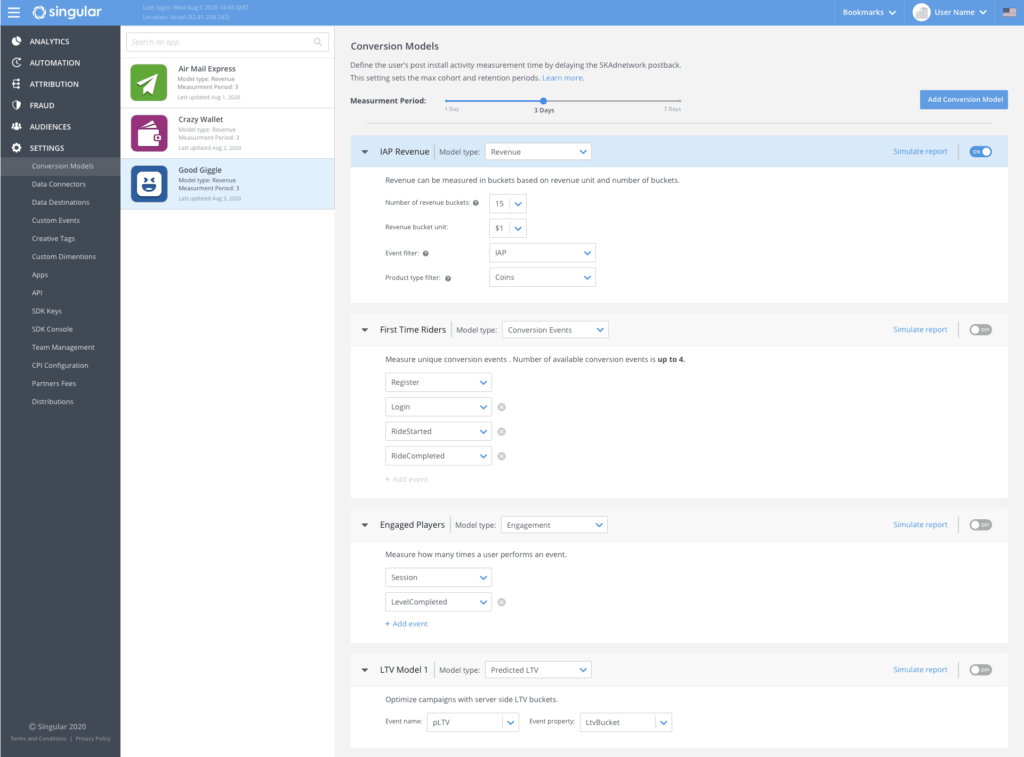The mobile gaming market in 2025 continues to prove just how resilient and fast-moving it is. After a year defined by the rise of hyper-casual hits, the steady strength of multiplayer and simulation games, and the ongoing dominance of franchise blockbusters, downloads are once again on the rise, surpassing last year’s record pace.
What’s new this year is the shape of that success. The biggest story of 2025 isn’t just scale, it’s diversification. Fresh titles from emerging studios are now competing head-to-head with legacy leaders like Tencent, Roblox, and Supercell. It’s a sign that creative innovation, not just brand recognition, is driving growth.
In this analysis, we look at the most downloaded and highest-grossing mobile games from January 1 to November 7, 2025. Using unified global app store data, we spotlight both worldwide leaders and country-specific trends that reveal how players’ tastes across puzzle, multiplayer, and simulation genres continue to evolve.
Global top 10 mobile games in 2025 (by downloads)
- Roblox — 278 million downloads
- Block Blast! — 272 million downloads
- Garena Free Fire — 263 million downloads
- Subway Surfers — 196 million downloads
- Pizza Ready! — 147 million downloads
- Ludo King — 145 million downloads
- Hole.io — 118 million downloads
- Vita Mahjong — 105 million downloads
- My Talking Tom 2 — 103 million downloads
- EA Sports FC Mobile — 102 million downloads
Curious how these compare to PC gaming? Check out the top PC games right now from 5 different perspectives
While Roblox maintains its global lead as a multi-platform metaverse experience, Block Blast! represents 2025’s breakout puzzle success story, an indication that lightweight, accessible puzzle titles remain the industry’s most powerful acquisition engines. Garena Free Fire continues its reign in emerging markets with exceptional reach in LATAM and Southeast Asia, while Subway Surfers demonstrates remarkable longevity with over a decade of consistent chart performance.
Top-grossing mobile games globally
- Honor of Kings (Tencent) — $1.25 billion
- Genshin Impact (miHoYo) — $1.18 billion
- Candy Crush Saga (King) — $950 million
- Roblox (Roblox Corporation) — $684 million
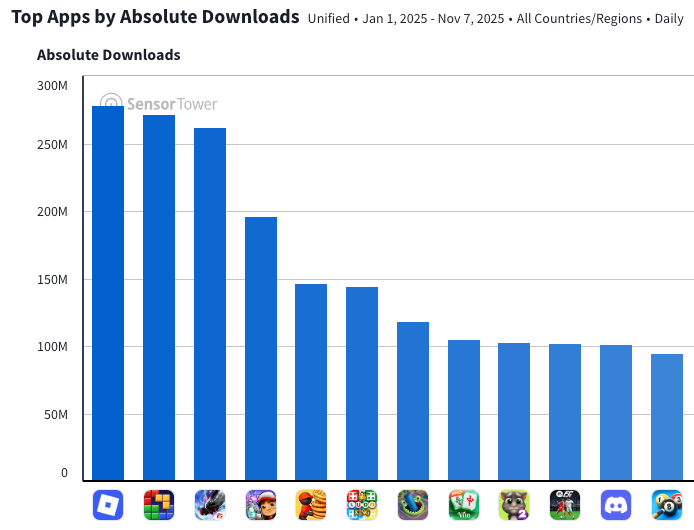
Top mobile games by country
United States
- Block Blast! — HungryStudio
- Roblox — Roblox Corporation
- Discord — Discord Inc.
- Royal Kingdom — Dream Games
- Vita Mahjong — Vita Studio
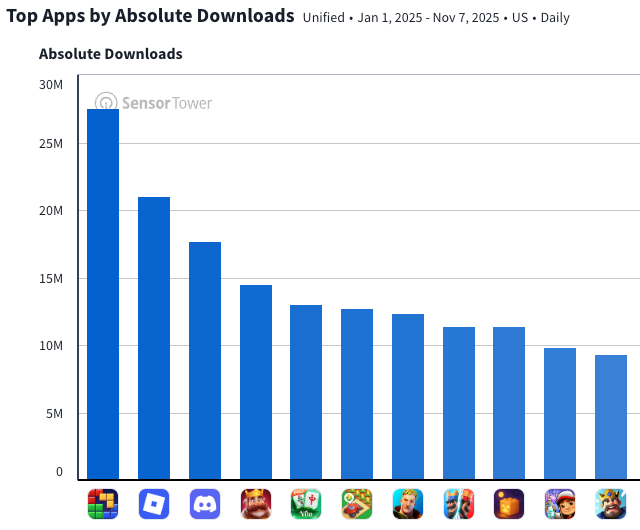
Top revenue performers: Roblox ($231M), Royal Kingdom ($170M)
The US market continues to balance entertainment and community. Roblox’s creative ecosystem still drives user-generated engagement, while puzzle-based titles like Block Blast! thrive on daily retention. Notably, Discord’s inclusion underscores the blending of gaming and social communication in user behavior.
China
- Delta Force — Tencent
- Honor of Kings — Tencent
- 和平精英 (Peace Elite) — Tencent
- Eggy Party — NetEase
- 无畏契约 (Valorant Mobile) — Tencent
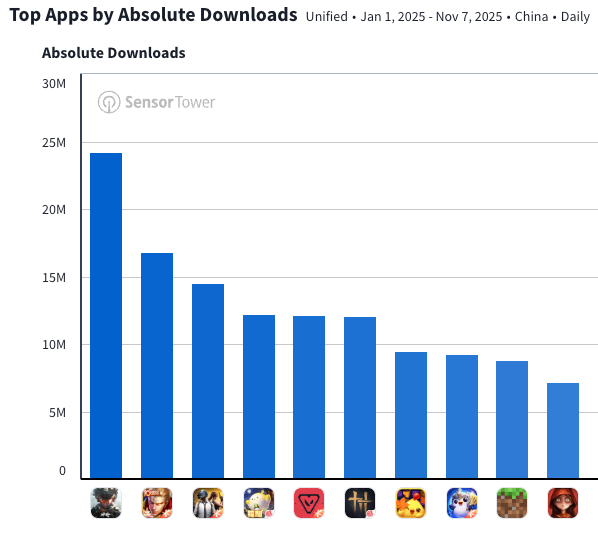
Top revenue performers: Honor of Kings ($1.25B), Peace Elite ($655M)
Tencent’s dominance remains unmatched, but Eggy Party’s continued presence signals a growing appetite for lighter, community-driven casual titles in China, a reflection of shifting preferences among younger mobile gamers.
Japan
- Block Blast! — HungryStudio
- Pokémon TCG Pocket — The Pokémon Company
- Color Block Jam — Take-Two Interactive
- SDガンダム ジージェネレーション エターナル — Bandai Namco
- Whiteout Survival — Century Games
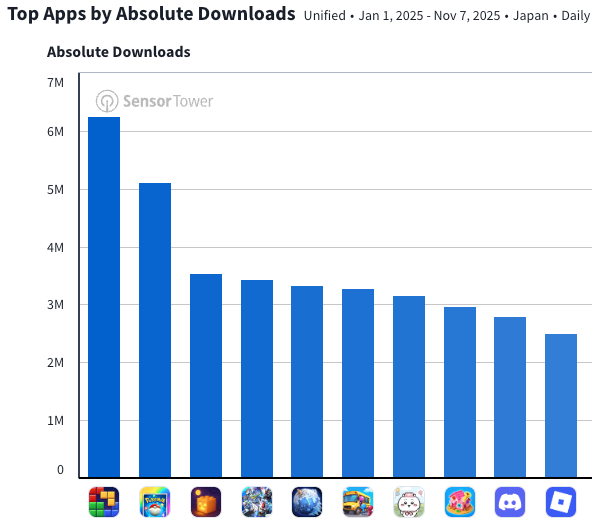
Top revenue performer: Pokémon TCG Pocket ($237M)
Japanese players continue to balance nostalgia and innovation. While puzzle hits capture quick play sessions, Pokémon TCG Pocket’s success demonstrates that collectible-based gameplay remains a strong monetization driver.
South Korea
- 고스톱M — Noriworks
- Block Game — Moca
- Block Blast! — HungryStudio
- Kingshot — Century Games
- 마비노기 모바일 — Nexon
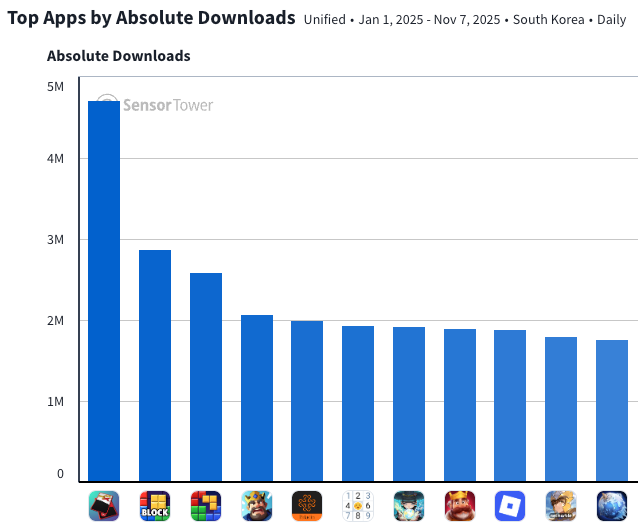
Top revenue performer: 마비노기 모바일 ($87M)
Korea’s 2025 charts showcase the power of traditional card and puzzle titles, with local publishers like Noriworks maintaining a cultural advantage. Nexon’s Mabinogi Mobile highlights enduring loyalty to beloved IP franchises.
Germany
- Block Blast! — HungryStudio
- Vita Mahjong — Vita Studio
- Roblox — Roblox Corporation
- Clash Royale — Supercell
- Kingshot — Century Games

Top revenue performer: Clash Royale ($26M)
Germany continues to favor strategy and competition, with Supercell maintaining a stronghold in monetization through event-driven gameplay.
France
- Block Blast! — HungryStudio
- Roblox — Roblox Corporation
- Vita Mahjong — Vita Studio
- Discord — Discord Inc.
- Last War: Survival — FUNFLY
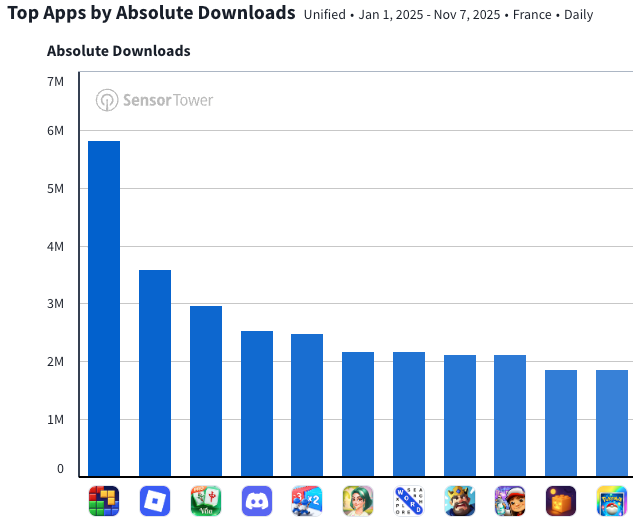
Top revenue performer: Last War: Survival ($30.8M)
France shows similar engagement patterns to the US, balancing creativity-focused titles with emerging social and survival games. Puzzle and community genres continue to drive retention.
Italy
- Block Blast! — HungryStudio
- Roblox — Roblox Corporation
- Discord — Discord Inc.
- Vita Mahjong — Vita Studio
- Clash Royale — Supercell

Top revenue performer: Roblox ($35.6M)
Italy’s rankings mirror broader European trends, with Roblox’s metaverse experience resonating across age groups and Supercell’s strategy games maintaining consistent monetization power.
Russia
- Block Blast! — HungryStudio
- Pokémon TCG Pocket — The Pokémon Company
- Color Block Jam — Take-Two Interactive
- SDガンダム ジージェネレーション エターナル — Bandai Namco
- Whiteout Survival — Century Games

Top revenue performer: Pokémon TCG Pocket ($237M)
While hyper-casual puzzle titles dominate downloads, high-value franchises like Pokémon and Gundam continue to deliver strong ARPU, signaling robust monetization among core players.
Canada
- Block Blast! — HungryStudio
- Roblox — Roblox Corporation
- Vita Mahjong — Vita Studio
- Discord — Discord Inc.
- Clash Royale — Supercell
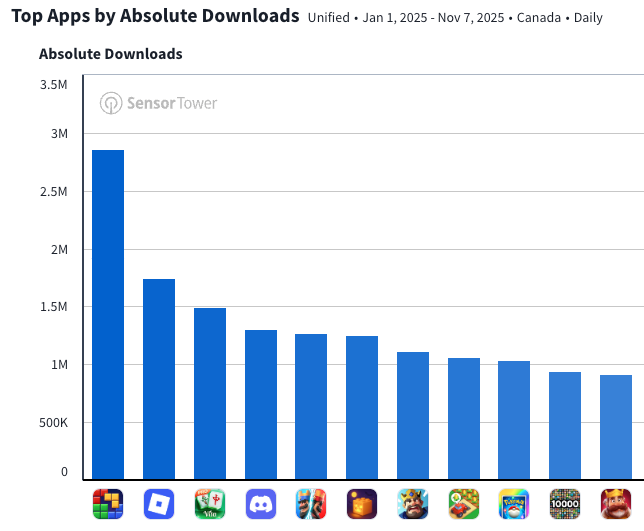
Top revenue performer: Clash Royale ($15.6M)
Canada’s trends align closely with the US, emphasizing hybrid play-and-social experiences. Roblox’s success across North America highlights the strength of player-generated economies.
Key insights for mobile marketers
The 2025 landscape underscores how cross-genre creativity drives both engagement and monetization. Hyper-casual puzzle games dominate global installs due to accessibility and low acquisition costs, while established franchises and community-driven ecosystems lead in lifetime value.
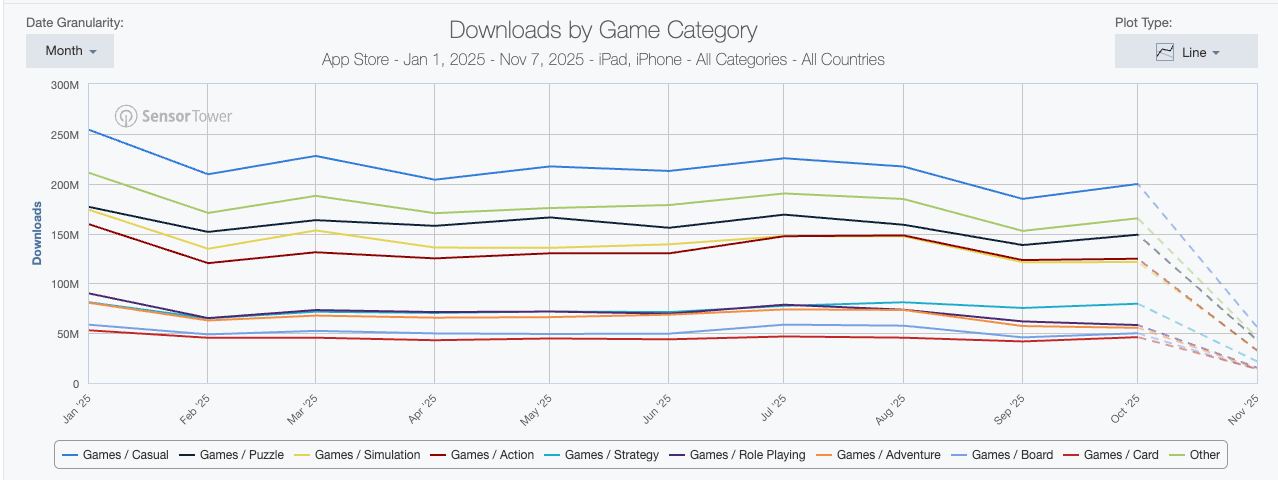
- Puzzle reigns supreme: Block Blast!’s near-global chart dominance proves puzzle remains the genre with the widest audience appeal and retention.
- Franchise loyalty endures: Honor of Kings, Clash Royale, and Pokémon maintain high ARPU and active user bases despite growing competition.
- Social ecosystems matter: Discord and Roblox show that community platforms are now central to the player experience, not just adjacent to it.
- Regional divergence continues: Asia leads in revenue density, while Western markets excel in install volume and engagement diversity.
Conclusion
Mobile gaming in 2025 reflects a maturing but still rapidly evolving ecosystem. Developers that blend global accessibility with local resonance – as seen in the coexistence of titles like Roblox and Eggy Party – are setting new benchmarks for both player engagement and revenue generation.
Looking ahead to 2026, expect greater convergence between social and gaming platforms, the rise of AI-driven personalization, and renewed experimentation in ad-driven monetization models. For marketers and developers alike, success will hinge on understanding not just what players download, but why they stay.
These games show what’s possible when creativity meets great execution. Behind every chart-topping title is a deep understanding of user acquisition, monetization, and ROAS. See the analytics platform top game studios use to get a competitive edge
